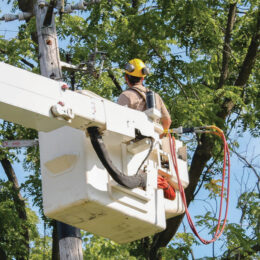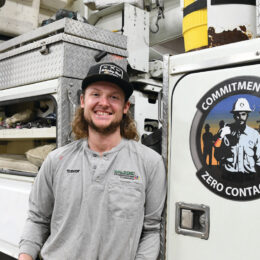
Energy Advisor
Here we are, kicking off a new year of “Ask the Energy Advisor.” It’s my hope you found the previous year’s articles helpful when it comes to understanding your energy consumption and ways to save.
To kick off 2020, I’m taking you back to the winters of my childhood. I used to love sledding in my backyard, building snow forts, having snowball fights with my brothers, and when we were done with the snow, breaking the icicles off our house and having sword fights.
Now, as much fun as that was when I was a kid, I didn’t care for it too much when I bought my childhood home and had to pay the heat bill to make those same icicles!
I’m talking about a process commonly referred to as “ice dams.” This takes place when one spot on the roof becomes warmer than a spot lower on the roof. The melted snow travels along the roof deck, hits the cold spot below and returns to ice. Typically, this happens right at the soffit, or the water can travel over the soffit to create the beautiful icicles most people have on their gutters — but those usually come with twinkly lights!
A few of the reasons this happens is insufficient insulation in the attic, air leaking into the attic and poorly insulated ductwork in the attic. In most cases, it is a combination of these along with changing conditions outside.
Insufficient insulation in the attic is probably the most noticeable of the reasons mentioned. The rule of thumb is if you can see your framing on the floor of the attic, the insulation is inadequate.
One of the most common causes of air leakage into an attic is recessed (can) lights. Older can lights had holes in them to let the heat out of the fixture, but this also allows heat from your home to escape into the attic. Improperly insulated or uninsulated ductwork in an attic has the potential to not only allow air to escape into the attic, but also loses heat through thermal transfer as well.
All these scenarios have the potential to cause damage to shingles and sheathing, ceilings and walls during the winter months. And even when there isn’t any snow present, they will continually cause a drain on your heating system, as well as add to your cooling costs in the summer.
The moral of this story is: proper attic air sealing, insulation and ventilation may well be the best money you can invest when it comes to saving energy in your home.
It’s a new year, and “Ask the Energy Advisor” welcomes your input. Have a question you’d like featured? Email brian.hawk@nobleremc.com with the subject line “Ask the Energy Advisor,” and it may be published.



